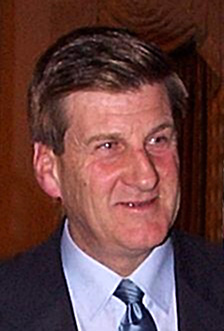
Jeffrey Gibb Kennett is an Australian former politician who served as the 43rd Premier of Victoria between 1992 and 1999, Leader of the Victorian Liberal Party from 1982 to 1989 and from 1991 to 1999, and the Member for Burwood from 1976 to 1999. He is currently a media commentator.

The 2002 Victorian state election, held on Saturday, 30 November 2002, was for the 55th Parliament of Victoria. It was held to elect the 88 members of Victorian Legislative Assembly and 22 members of the 44-member Legislative Council.
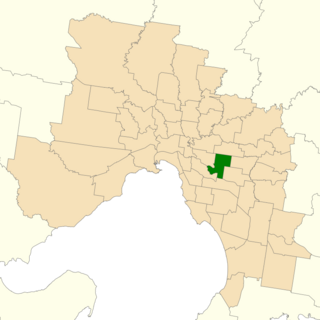
The electoral district of Burwood was an electorate for the Victorian Legislative Assembly in Australia. It was located approximately 13 kilometres east of Melbourne, and covered an area of 25 km2. The seat included the suburbs of Ashburton, Ashwood, Box Hill South, Burwood, Chadstone, and parts of Camberwell, Canterbury, Glen Iris, and Surrey Hills. It was created in 1955 as part of the expansion of the Legislative Assembly, and abolished in 1967, replaced by Glen Iris. Burwood was recreated in 1976, replacing Glen Iris.

The 1999 Victorian state election, held on Saturday, 18 September 1999, was for the 54th Parliament of Victoria. It was held in the Australian state of Victoria to elect the 88 members of the state's Legislative Assembly and 22 members of the 44-member Legislative Council. The Liberal–National Coalition led by Jeff Kennett and Pat McNamara, which had held majority government since the 1996 election, lost 15 seats and its majority due mainly to a swing against it in rural and regional Victoria.

Peter Julian Ryan is a former Australian politician who was leader of The Nationals in Victoria from 1999 to 2014. He represented the electoral district of Gippsland South from 1992 to 2015, and from 2010 to 2014 was the Deputy Premier of Victoria as well as the Minister for Rural and Regional Development. In addition, Ryan was the Minister for Police from 2010 to 2013.

The 1992 Victoria state election, held on Saturday, October 3. was for the 52nd Parliament of Victoria. It was held in the Australian state of Victoria to elect all 88 members of the state's Legislative Assembly and 22 members of the 44-member Legislative Council.

The electoral district of Essendon is an electoral district of the Victorian Legislative Assembly. It was first created in 1904 after the abolition of the larger Essendon and Flemington electorate, and covers some of the north-western suburbs of Melbourne, including Essendon, Moonee Ponds and Ascot Vale.
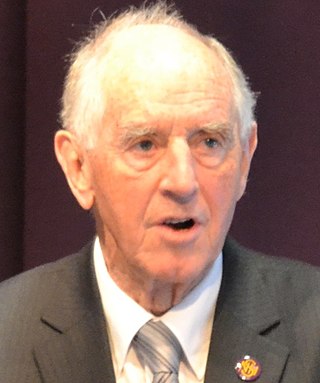
The 1988 Victorian state election, held on Saturday, 1 October 1988, was for the 51st Parliament of Victoria. It was held in the Australian state of Victoria to elect all 88 members of the state's Legislative Assembly and 22 members of the 44-member Legislative Council.
Seymour was an electoral district of the Victorian Legislative Assembly. It covered rural territory north of Melbourne, including the towns of Alexandra, Healesville, Kinglake, Marysville, Seymour and Yea.

The 2006 Victorian state election, held on Saturday, 25 November 2006, was for the 56th Parliament of Victoria. Just over 3 million Victorians registered to vote elected 88 members to the Legislative Assembly and, for the first time, 40 members to the Legislative Council under a proportional representation system. The election was conducted by the independent Victorian Electoral Commission.
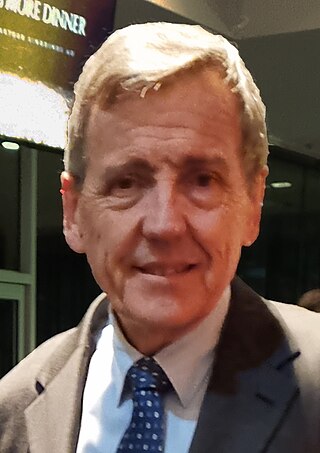
Robert William Clark is an Australian former politician. He was a Liberal Party member of the Victorian Legislative Assembly from 1988 to 2018, representing the electorates of Balwyn (1988–1992) and Box Hill (1992–2018). He served as Attorney-General and Minister for Finance in the Baillieu Ministry and Napthine Ministry from 2010 to 2014, and also served as Minister for Industrial Relations under Napthine from 2013 to 2014. He had previously served as Parliamentary Secretary to the Treasurer (1992–1996) and Parliamentary Secretary for Treasury and Multimedia (1996–1999) during the Kennett government.
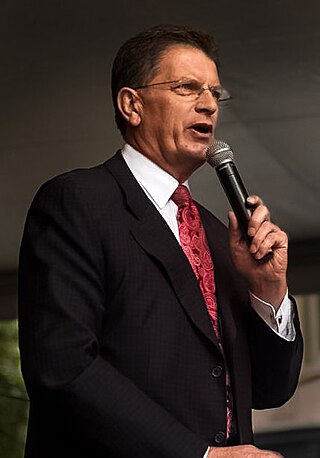
The 2010 Victorian state election, held on Saturday, 27 November 2010, was for the 57th Parliament of Victoria. The election was to elect all 88 members of the Legislative Assembly and all 40 members of the Legislative Council. The incumbent centre-left Labor Party government, led by John Brumby, was defeated by the centre-right Liberal/National Coalition opposition, led by Ted Baillieu. The election gave the Coalition a one-seat majority in both houses of parliament.

Bendigo West is an electoral district of the Legislative Assembly in the Australian state of Victoria. It is a 1,524-square-kilometre (588 sq mi) electorate, centred on the city of Bendigo west of the Yungera railway line, and includes surrounding rural towns to the west and south-west. It encompasses the localities of Bendigo City, California Gully, Castlemaine, Harcourt, Long Gully, Maldon, Marong, Newstead and West Bendigo. It also includes parts of the Bendigo suburbs of Eaglehawk, Golden Square and Kangaroo Flat. It lies within the Northern Victoria Region of the upper house, the Legislative Council.
Carole Frances Marple is a former Australian politician. She was the Labor member for Altona in the Victorian Legislative Assembly from 1992 to 1996.

The 1985 Victorian state election, held on Saturday, 2 March 1985, was for the 50th Parliament of Victoria. It was held in the Australian state of Victoria to elect all 88 members of the state's Legislative Assembly and 22 members of the 44-member Legislative Council. Since the previous election, the number of members of the Legislative Assembly was increased by 7 to 88.
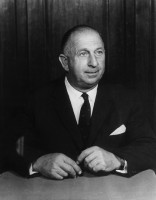
The 1955 Victorian state election was held in the Australian State of Victoria on Saturday, 28 May 1955 to elect 65 members of the state's Legislative Assembly.
The Victorian National Party, officially known as the National Party of Australia – Victoria, is an Australian political party that serves as the state branch of the federal National Party in Victoria. It represents graziers, farmers, miners and rural voters.
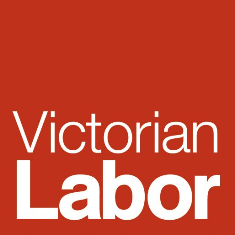
The Victorian Labor Party, officially known as the Australian Labor Party and commonly referred to simply as Victorian Labor, is the Victorian state branch of the Australian Labor Party (ALP). The party forms the incumbent government in the state of Victoria and is led by Jacinta Allan, who has served concurrently as Premier of Victoria since 2023.

The Victorian Liberal Party, officially known as the Liberal Party of Australia (Victorian Division) and branded as Liberal Victoria, is the state division of the Liberal Party of Australia in Victoria. It was formed in 1949 as the Liberal and Country Party (LCP) and simplified its name to the Liberal Party in 1965. The party sits on the centre-right to right-wing of the Australian political spectrum, and is currently led by Brad Battin.

The 1999 Frankston East state supplementary election was held on 16 October 1999 to elect the next member for the electoral district of Frankston East in the Victorian Legislative Assembly, following the death of sitting MP Peter McLellan on the day of the 1999 Victorian state election.

















